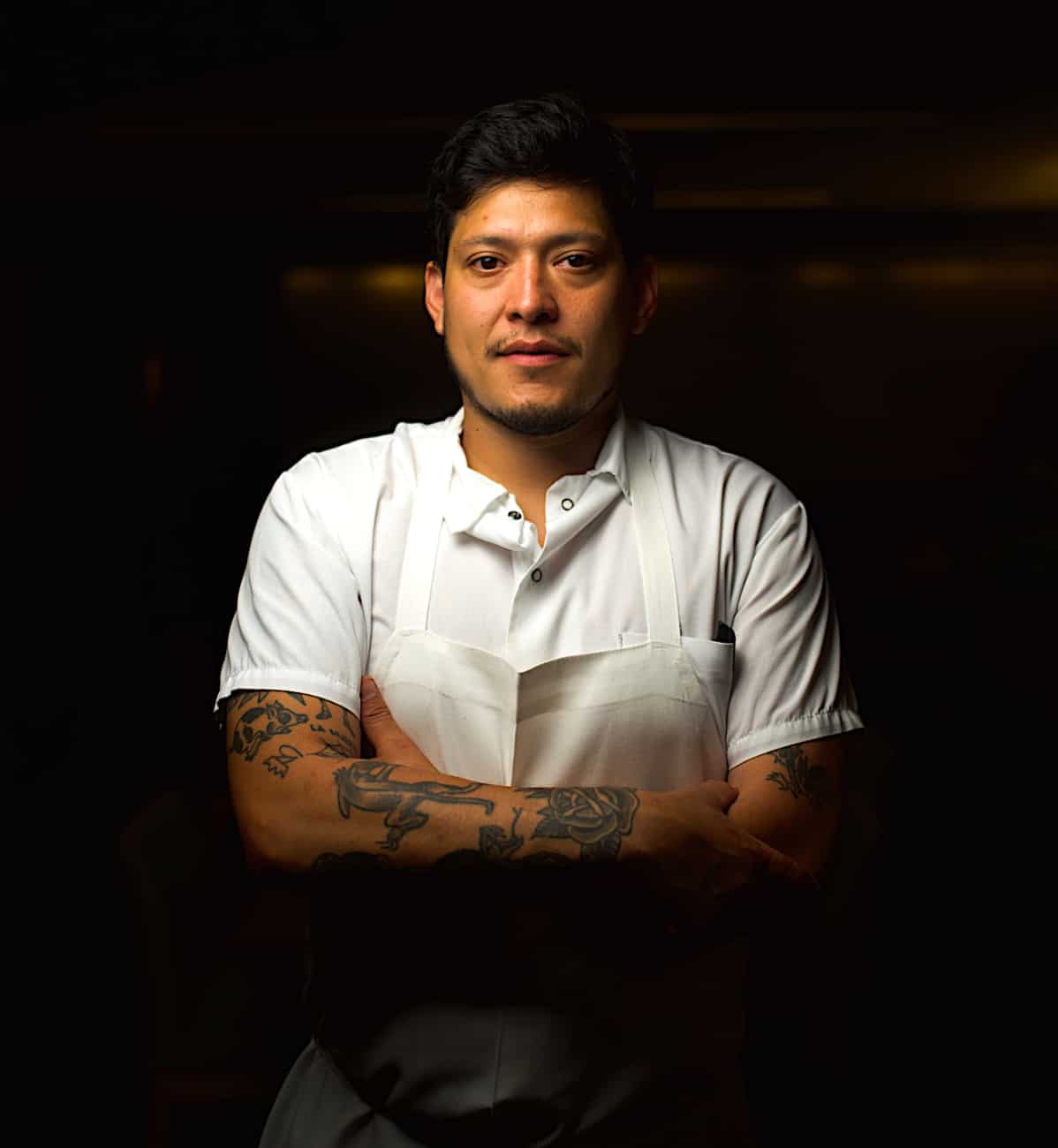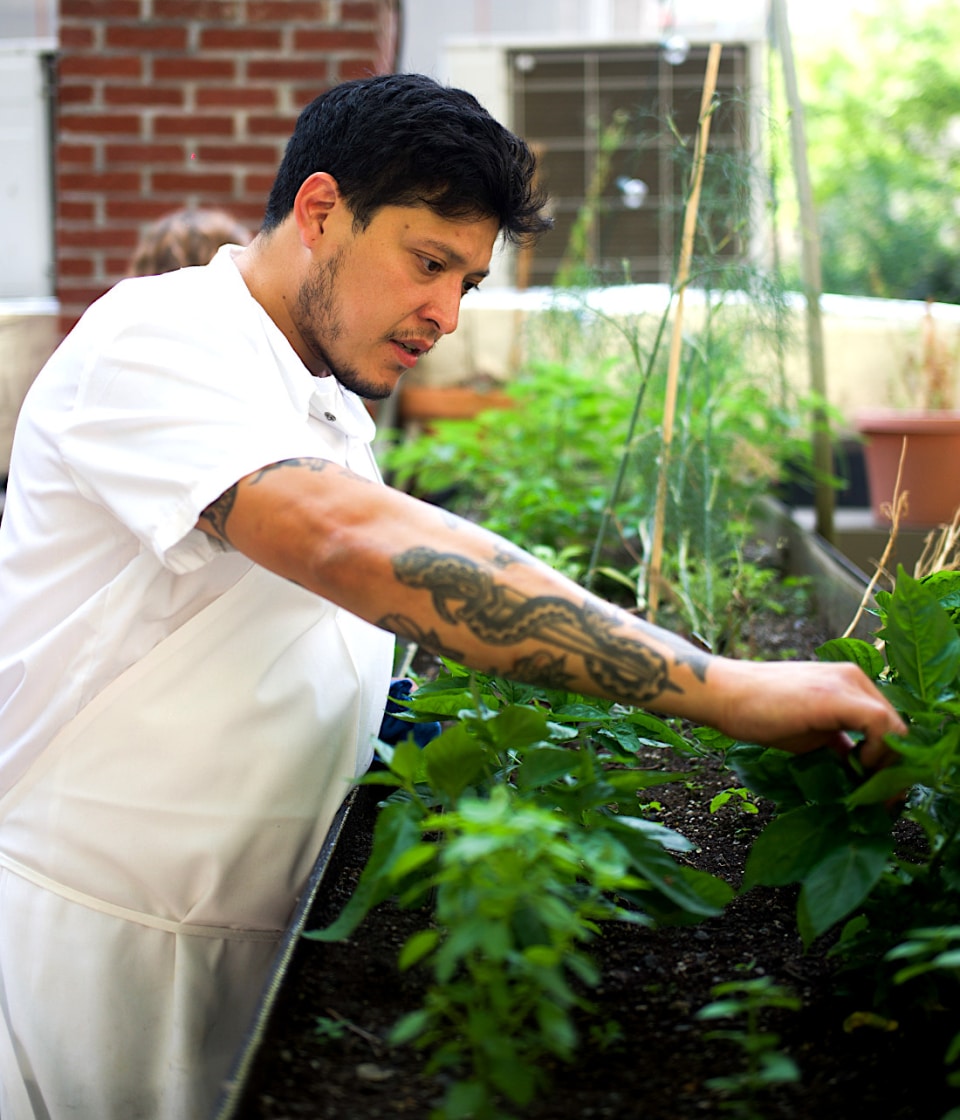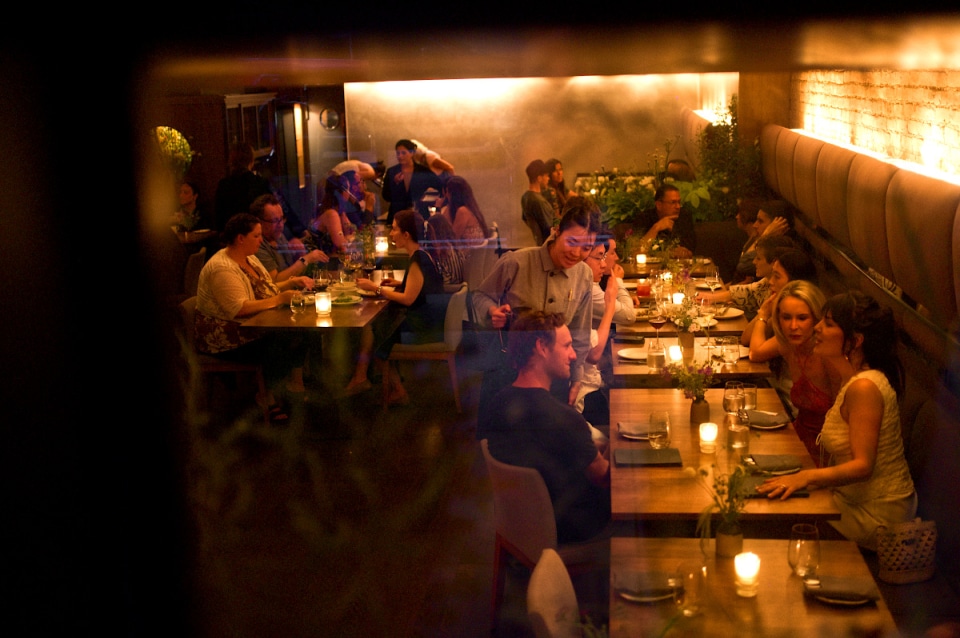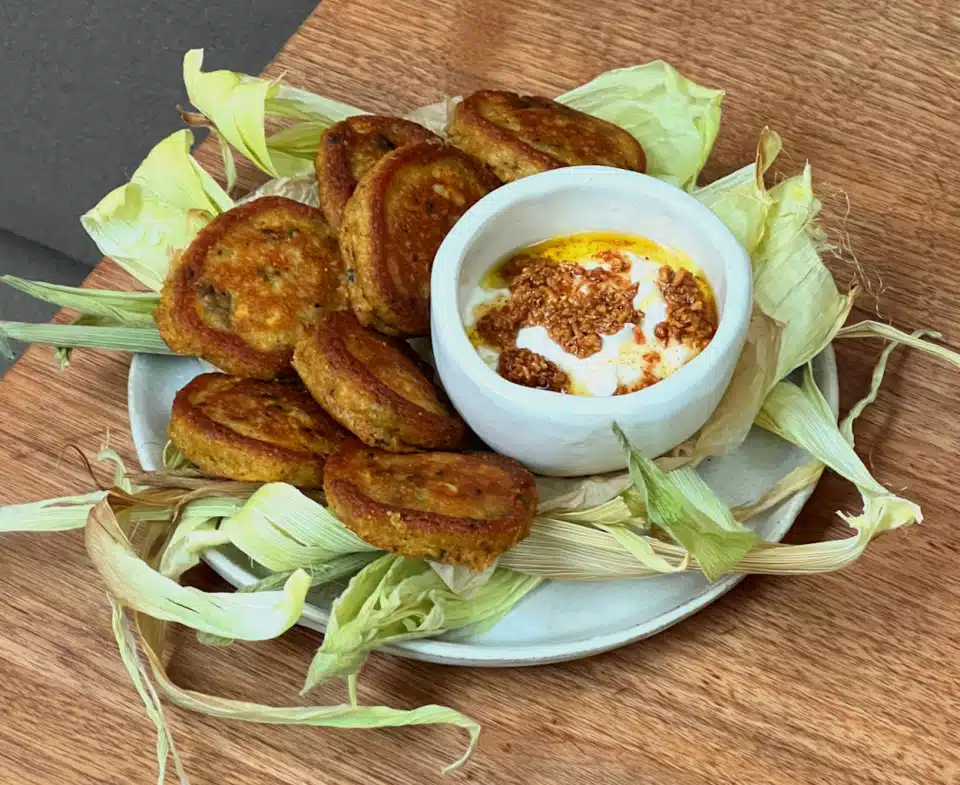Chef of the Week: Inside Mark Ordaz’s Seasonal Kitchen at Blue Hill

We’re thrilled to shine the spotlight on Chef Mark Ordaz, Executive Chef at Family Meal at Blue Hill, NY, in this week’s Chef of the Week feature. Known for his market-driven style — creating dishes inspired by the freshest seasonal ingredients sourced directly from local farms — Mark brings spontaneity, creativity, and precision to every plate. His leadership style fosters creativity and ownership among his team, while his dedication to sustainability has helped earn both Michelin and Green Stars for Family Meal.
From his early days at Daniel Boulud’s DB Bistro Moderne to the transformative influence of working alongside Chef Dan Barber at Blue Hill, Mark’s journey has been shaped by a deep respect for ingredients and the people who grow them. In our exclusive conversation, he shares the ingredients he’s loving right now, the practices that keep his kitchen both sustainable and inspired, and why, at the end of a long night, macaroni and cheese is still his ultimate comfort food.
At Family Meal, dishes are often crafted on the day they’re served. How do you and your team approach this spontaneous creation while ensuring consistency and quality?
Most of the changes we make happen before the day starts in the kitchen. We go to every market day so that we can taste everything constantly and talk with the farmers about what they’re most excited about—but also what they are struggling to sell.
We talk with the farmers about what they’re most excited about—but also what they are struggling to sell.
As far as consistency, because of the family-style dishes we do, we’re able to adjust throughout the night. For us, consistency comes with constant tasting. For example, sometimes we bring in the same ingredient from multiple farms, and each farm is unique as far as farming techniques, weather, soil quality, etc. so that means each ingredient comes out differently and needs special attention.
What are your top three favorite ingredients to cook with right now, and why?
That’s a tough question to answer with the season changing so fast this year, but first I think cucumbers. There are so many different varieties, the quality has been great, and you can use most of the plant. The leaves have a very intense bitter cucumber flavor that we have been using to make a sorbet.
And cherries are great so far this year. They usually make it through every part of our menu before the season is over because they’re so versatile. They’re great as the main ingredient but also add a ton of flavor and depth to other savory dishes. And then there’s Sweet Garleek (i.e. a first ever cross between garlic and leek), one of the newer vegetables from Row 7. And if you like leeks then this is what you should be using—the flavor is super well balanced and the name is spot on: it’s so sweet.

Can you share an instance where a particular seasonal ingredient inspired a new dish or altered your culinary approach?
Every season there’s something that really stands out and it’s never the same year to year. I guess the one thing that comes to mind is pepper season. Peppers have a huge variety of flavors and applications. If you use them right you can make something that will last the whole year. They make great ferments, jellies, and powders.
What strategies do you employ to encourage your team to contribute creatively to the ever-evolving menu?
I don’t know if you call this a strategy, but we try not to use recipes for each and every thing. There’s always a time when it’s necessary, mostly for pastry and breads, but for the most part we like to create from a list of ingredients. Then we show the cooks and explain the process but also remind them that it will take constant tasting and adjustment to get it right.
I think by doing this it gives our cooks a sense of ownership and responsibility that teaches them to think a little more creatively. Of course we also ask for their input when we teach them a new dish. It’s meant to be done a certain way but we also like to hear what they think and what they would change or add.
How do you mentor emerging chefs in your kitchen, and what qualities do you look for
when nurturing talent?
I try to give everyone the same opportunities and chances to learn and grow but with some of the cooks that have been here longer or moved into junior positions I try to get them to think about how to create a full menu. I think making one dish is a great start and we do that with some of the newer cooks, but to think about a menu as a whole—and what the end result and feeling is for the guest—is a great way to really start thinking about what kind of chef you want to be.
As far as qualities, the ones I look out for the most are humility, self awareness, and constant curiosity.
As far as qualities, the ones I look out for the most are humility, self awareness, and constant curiosity. I think if you’re naturally just a creative person that’s great and can go a long way but if you don’t ask the right questions, can’t take constructive criticism, and have a hard time reflecting or taking responsibility then it makes it difficult to grow.
Do you ever worry that terms like “sustainable” or “local” have lost their impact? How do you keep those values alive without sounding like a sales pitch?
I don’t think they’ve necessarily lost their impact. It seems like the majority of the top restaurants are working toward making good on those values. Everyone has their own way, but it’s a priority for us to do that through our sourcing.
We also compost what we can, and are constantly looking for ways to cut down on waste and repurpose scraps instead. Most importantly, we try to make sure the work we do is sustainable for the staff by balancing work and life, and making sure they enjoy their work and don’t feel like it’s a burden to show up everyday.
What practices have you implemented in the kitchen to reduce food waste and promote sustainability?
First, we just try to use everything that we can, for stocks, ferments or seasoning salts. We also added a bar menu option to our dinner service that allows us to sell some of the cuts of meat that might not make it on the menu. We also send our compost to a queens based company called Afterlife, which uses all
the compost for mushroom production.
We added a bar menu option to our dinner service that allows us to sell some of the cuts of meat that might not make it on the menu.
Who have been your most significant culinary influences, and how have they shaped your approach to cooking?
This is a long list. I think from the start there were a lot of cooks and sous chefs that I looked up to when I first moved to New York. My first restaurant was DB Bistro Moderne— of course Daniel Boulud was a huge influence, a chef I have so much respect for, but it was a lot of the cooks there that really taught me teamwork and how to push myself without sacrificing quality. Sean Gray was also another huge influence. I truly believe any creativity I have was brought out by him. To this day I think about doing R&D with him back at Ko.
Currently it’s Chef Dan [Barber]. Before coming to Blue Hill I had thought I knew what it meant to source properly and cook locally but since starting here I have really started to see if from his lens. I don’t know that I’ll ever have the full, bigger picture understanding the way he does but what I’ve learned so far has really pushed me to be better all around. I’ve learned something or been influenced by almost everyone I have ever worked with.
Reflecting on your career, how has your culinary style evolved over the years, and what experiences have been pivotal in that transformation?
I don’t know how I would define my “style” and for a long time I tried to force it, to the point that I didn’t want to cook anymore. I think when I started here at Family Meal, that was the biggest transformation. It became less about me and more about the produce we were cooking, or the breed of certain proteins and once that was the focus it was like a huge weight off my shoulders. I knew I had to do right by those ingredients and details, and once that was clear the creativity happened and it didn’t feel forced
anymore.

How do you define success in your role, and what achievements are you most proud of at Family Meal?
The Michelin Star and Green Star have definitely been something we are very proud of—the Green Star especially because it recognizes the work that we do to be as sustainable as possible. But the day-to-day achievement that I’m most proud of is the team. We’ve had a steady team for quite some time and I think the work they do is what’s helped us maintain our stars.
Without a set menu, how do you gather and interpret guest feedback to refine the dining experience?
We rely heavily on the front-of-house team to help gather guest feedback. We check reviews but that isn’t always the most reliable source — people tend to let out every feeling they have when it’s online for everyone to see, which makes it less constructive. The staff do a great job engaging with guests and finding out what their preferences are or why they didn’t like a dish. We know we won’t win with everyone.
After a long service, what’s your go-to comfort food at home?
I think for me it’s macaroni and cheese. It’s the perfect snack no matter how the service went—could have been the best or worst service of your life, it’s still gonna hit the same.

Featured photo credit: Jordan Sapally
Mark Ordaz
Instagram | LinkedIn
Family Meal at Blue Hill


